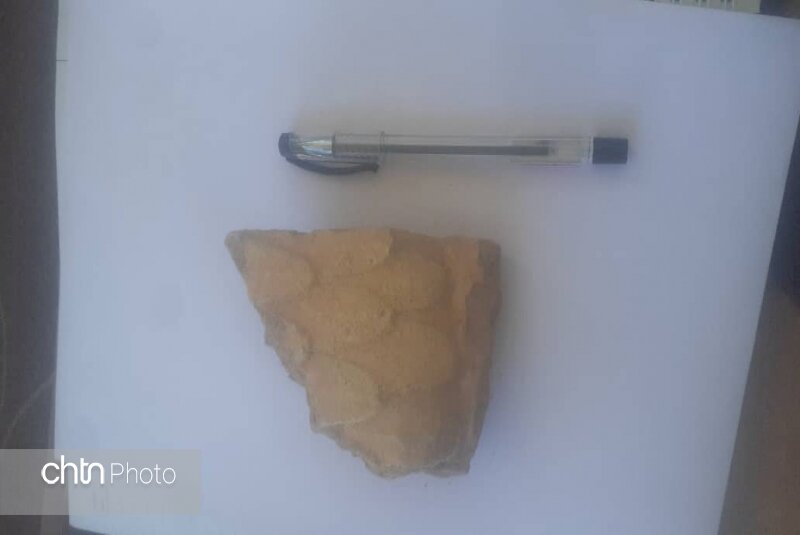Guard accidentally finds Achaemenid pottery fragment southern Iran

TEHRAN – A cultural heritage guard has recently discovered a prehistorical pottery fragment while patrolling the prehistorical site of Tall-e-Ajori near Persepolis in southern Iran.
“A guard has discovered an engraved pottery piece while patrolling Tall-e-Ajori” police official Mohammadreza Bahmaninejad announced on Thursday.
“He then delivered the object to a local police unit which is in charge of protecting cultural heritage, he said, adding: “The discovered pottery fragment was later handed over to the UNESCO-registered Persepolis.”
Initial assessments suggest that the object date back to the early Achaemenid era (c. 550-330 BC).
Persepolis, also known as Takht-e Jamshid, whose magnificent ruins rest at the foot of Kuh-e Rahmat (Mountain of Mercy), was the ceremonial capital of the Achaemenid Empire. It is situated 60 kilometers northeast of the city of Shiraz in Fars province.
Persepolis was set on fire upon the order of Alexander the Great in 330 BC apparently in a revenge for Persian King Xerxes who had burnt the Greek City of Athens around 150 years earlier.
It was the seat of the government of the Achaemenid Empire, though it was designed primarily to be a showplace and spectacular center for the receptions and festivals of the kings and their empire. This 13-ha ensemble of majestic approaches, monumental stairways, throne rooms (Apadana), reception rooms, and dependencies is classified among the world’s greatest archaeological sites.
The Achaemenid Empire was founded by Cyrus the Great. At its greatest extent from the Balkans to the Indus Valley, it was one of the largest empires in history, spanning 5.5 million square kilometers, and was larger than any previous empire in history.
AFM/

Leave a Comment